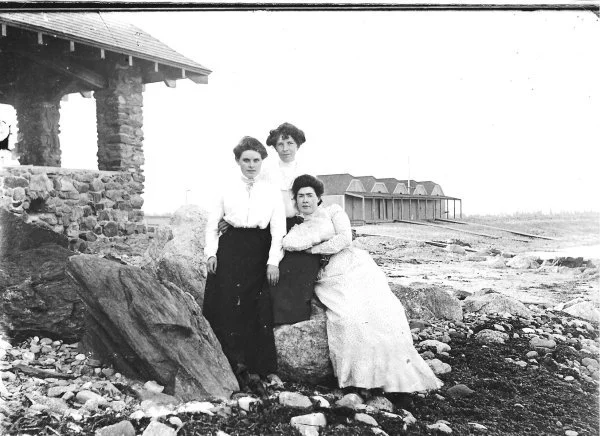Rye400 Committee - As published in Stroll Magazine, February 2023
This year, 2023, marks the 400th anniversary of the first European settlement in the area we now know as Rye. Why are we celebrating? “It’s our story,” says Andy Stecher, Rye400 Committee Chair. “We can trace the beginning of the State of New Hampshire to a spot that is now Odiorne Point. Everything we are doing, is in recognition of that story.”
Thousands of years before the Europeans landed in the area, there were people who lived on and worked the land. According to Howard S. Russell’s Indian New England Before the Mayflower (1980), there were native Algonquins and a Penacook confederacy. Proof of their existence is recorded in 1608 by French explorer, Samuel de Champlain. Less than 20 years later, Russell states, disease decimated the Penacook. The Abenaki confederacy from the north migrated to the area and is established when, in 1623, David Thompson and a group of Europeans took advantage of the already-established fishing outposts on the Isles of Shoals and established a settlement on the mainland called Pannaway Plantation.
In the years that followed, their fishing industry prospered by supplying great amounts of dried fish to the European market. Family-owned farms were established to support the growing needs of the inhabitants. At the same time, according to NH’s Folk Life Center (https://www.nh.gov/folklife/learning-center), the state’s Native American population was declining due to disease, conflicts with invading Mohawks, and tensions with European settlers increasingly claiming ownership of Abenaki ancestral lands. The remaining Abenaki either married Europeans, melded into the rural population, or left and settled in Canada.
By 1726, the “Plantation,” was designated as the Parish of Rye in New Castle, named at the suggestion of the Jenness family who came from Rye, England. About 60 years later, in 1785, the Parish was incorporated as the separate, independent town of Rye, New Hampshire.
Throughout the 18th and 19th centuries, small, family farms continued to evolve. By the mid-19th century, with the accessibility of train travel to all, the trend to visit the seashore became an opportunity for Rye entrepreneurs. Boarding houses made stays affordable, and bigger hotels — e.g., the Farragut — appeared on the mainland and out on the Isles of Shoals. The number and quality of the accommodations helped establish Rye as one of the most popular destinations on the eastern seaboard.
Rye’s reputation as a beautiful seaside community continues today. Its 18 miles of shoreline still attract thousands of day visitors annually. But, although there are still a few vacation lodgings in town, the grand hotels and boarding houses have vanished. Today, Rye, with its roots in fishing, farming and tourism, has evolved to a predominantly residential community.
The Rye400 Committee, under the auspices of the Rye Historical Society, is proud to lead the effort for this community-wide celebration. “We are aware of our responsibility to ensure we have a celebration that recognizes all aspects of our history and has something for everyone,” says Stecher. Keep up on everything Rye400 @ https://www.ryenh400.org/, via email @ ryenh400@gmail.com, on Facebook and on Instagram (ryenh400).




